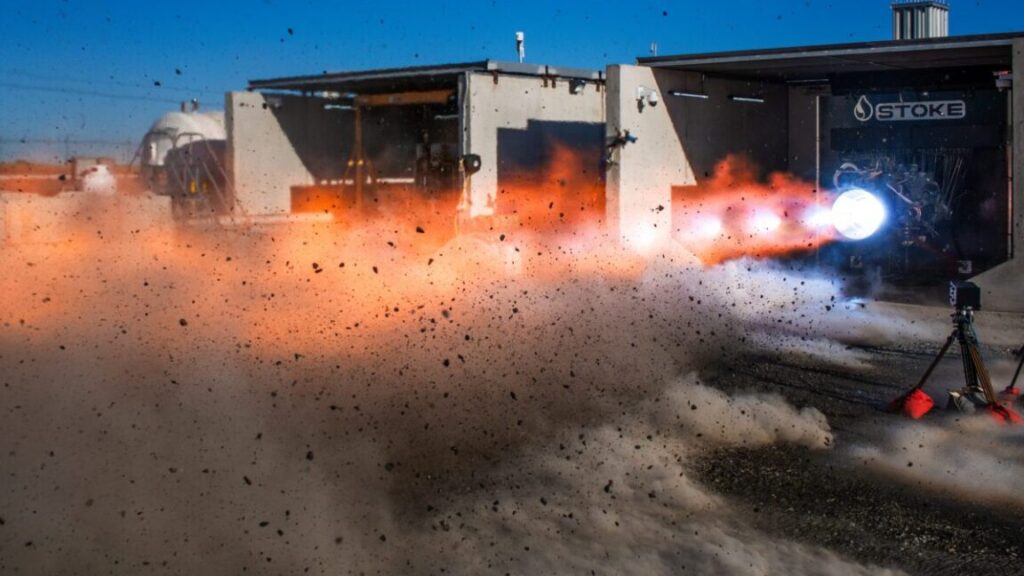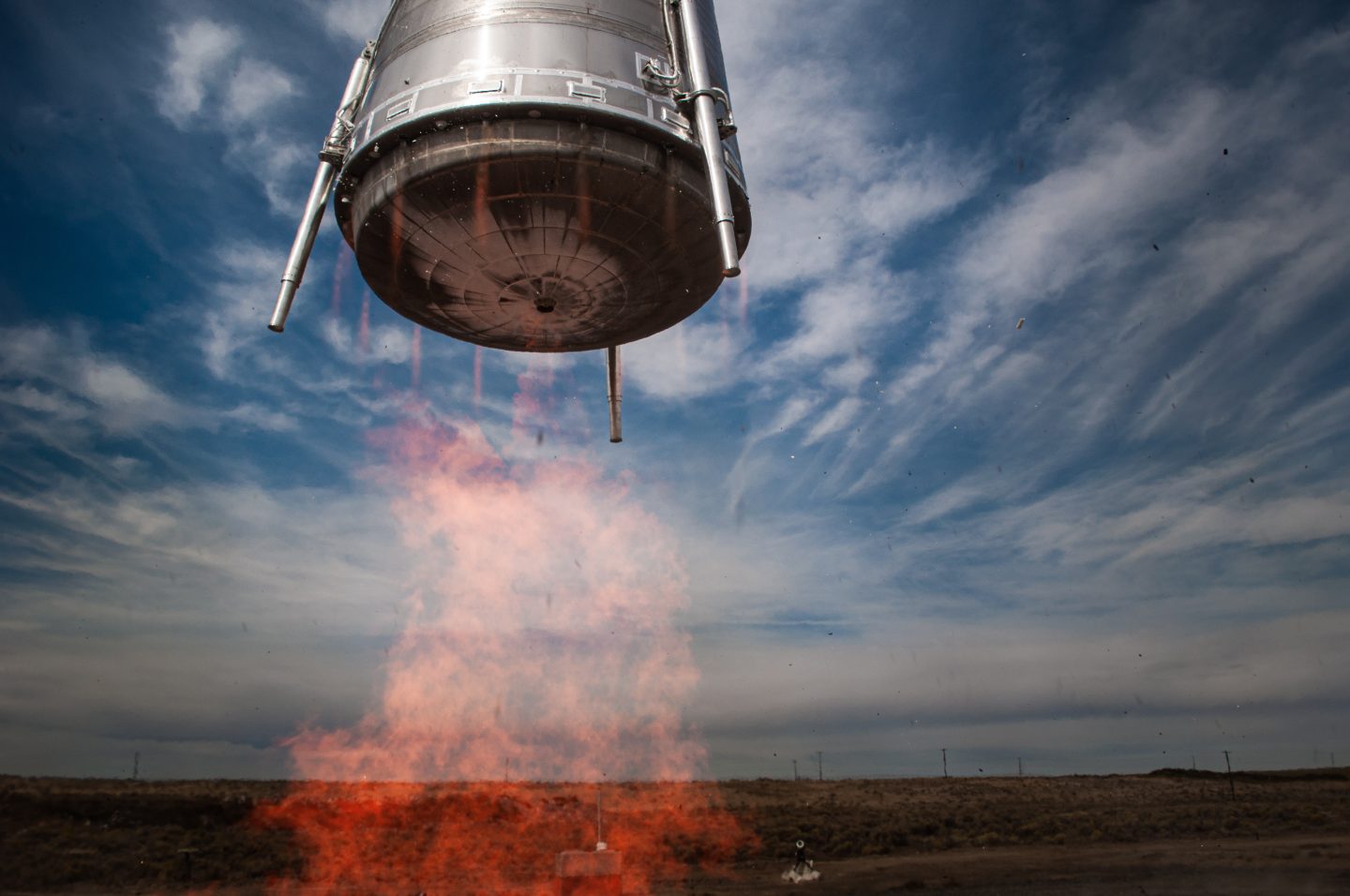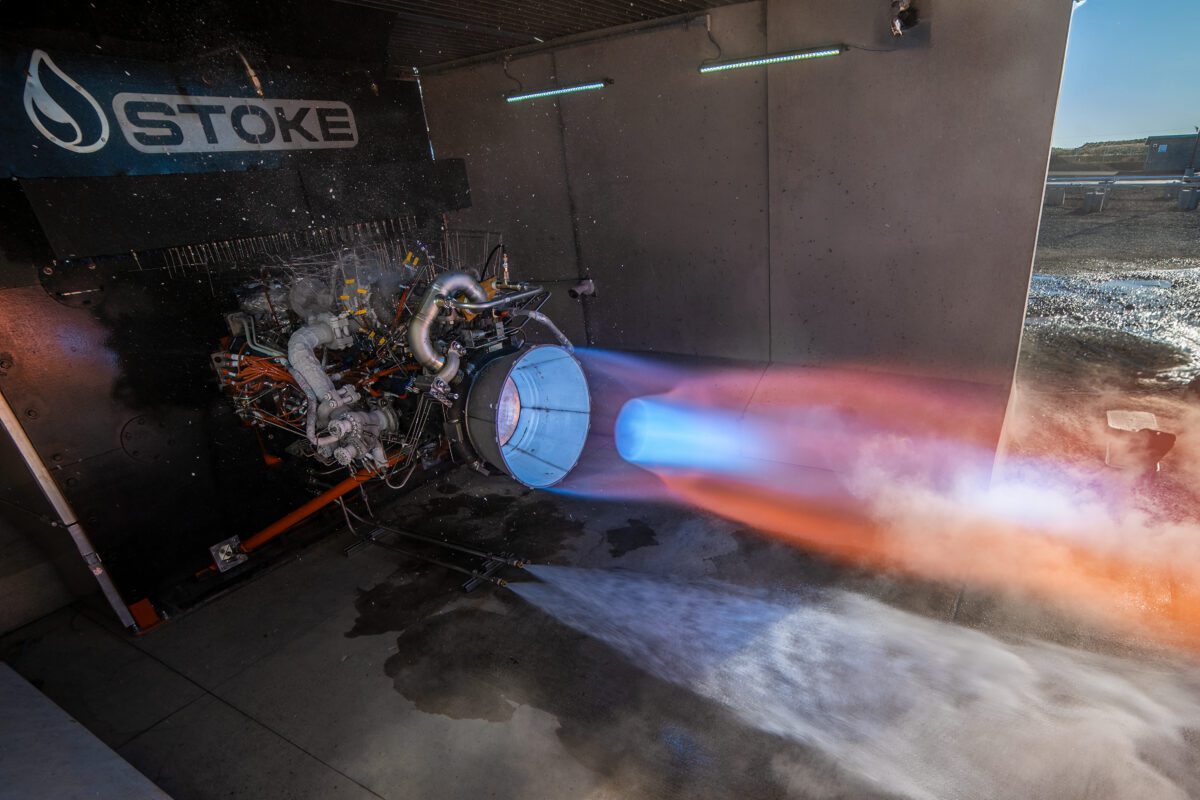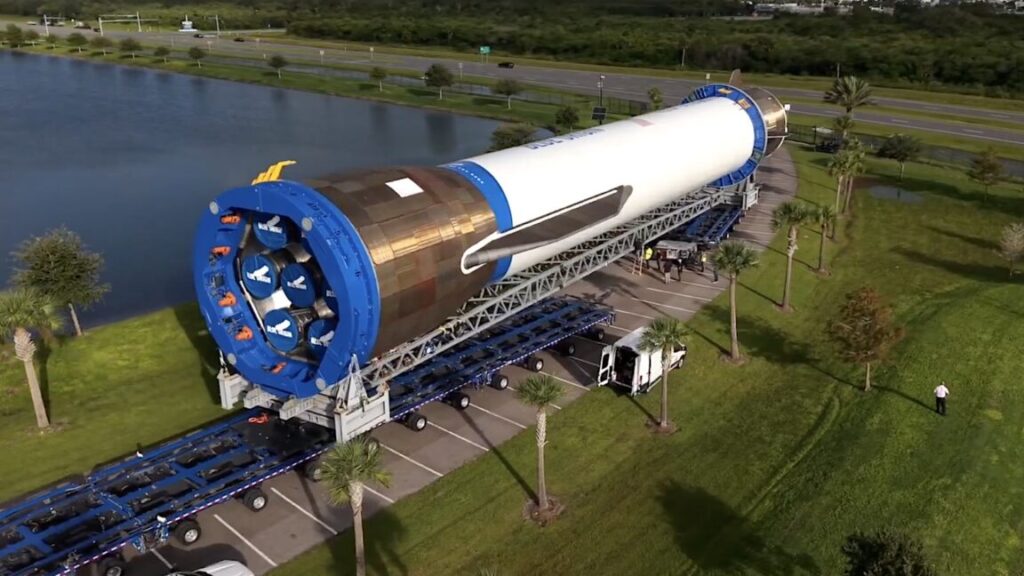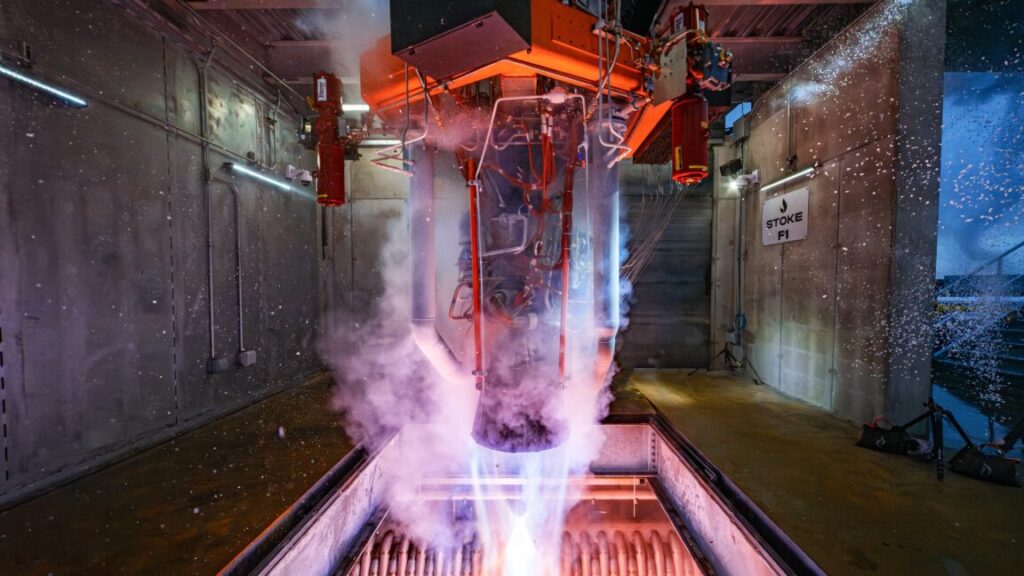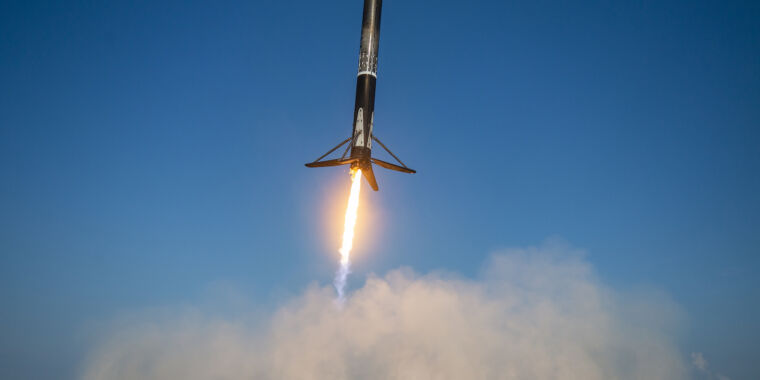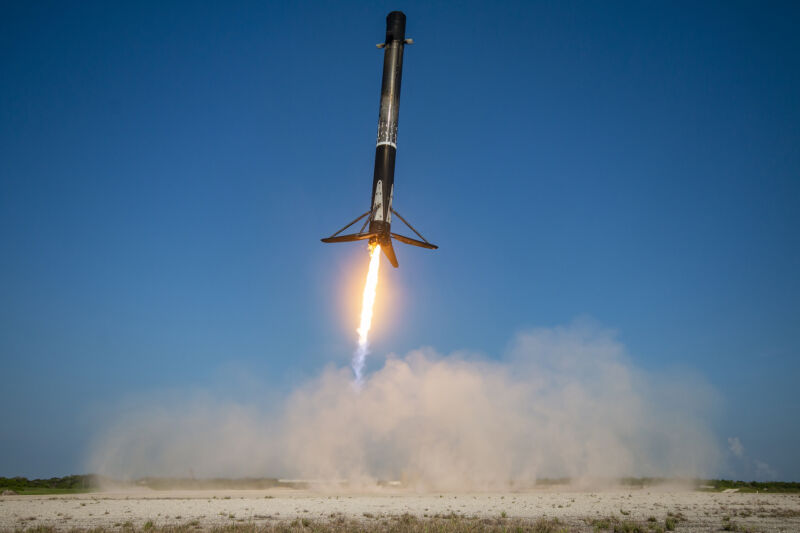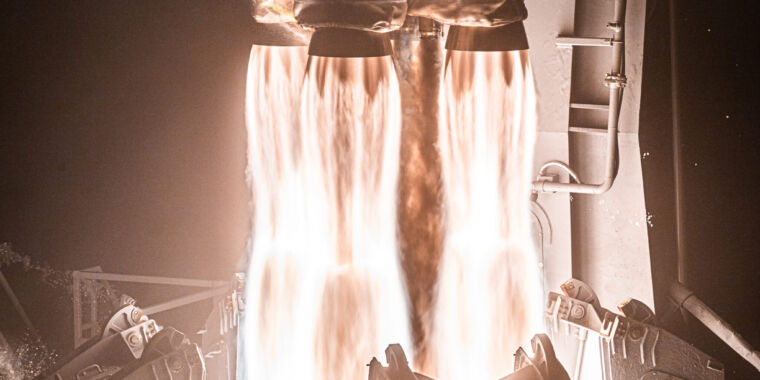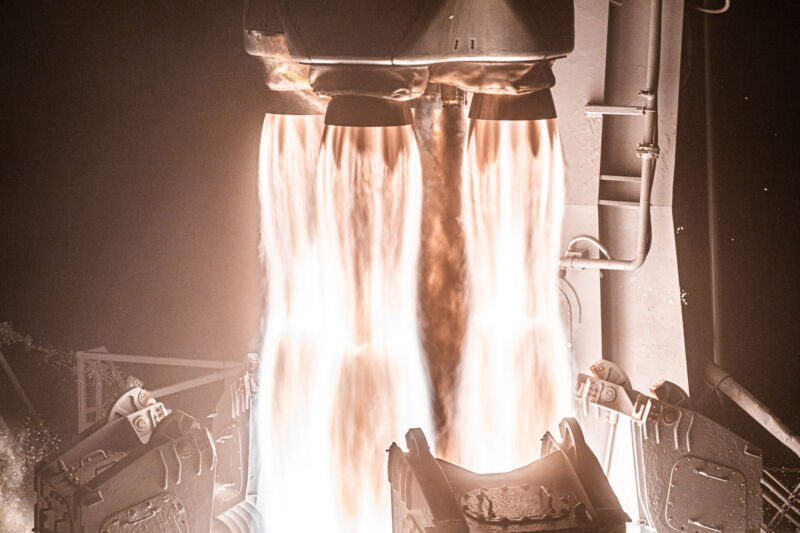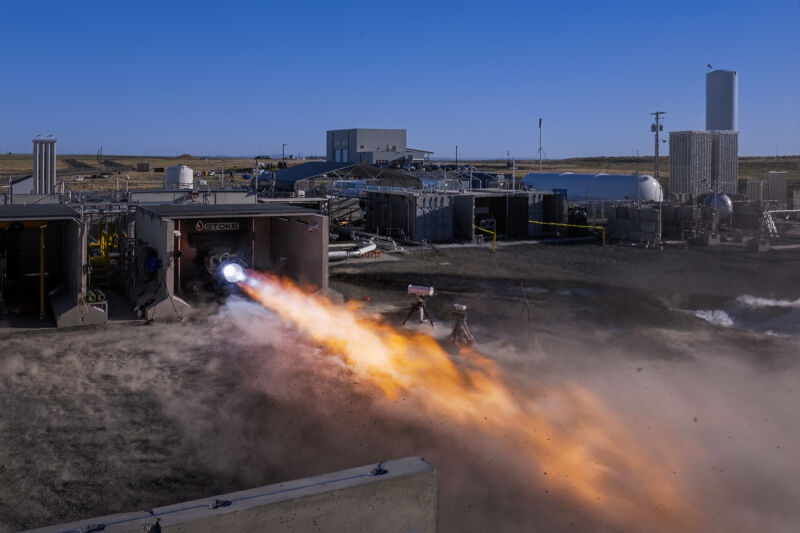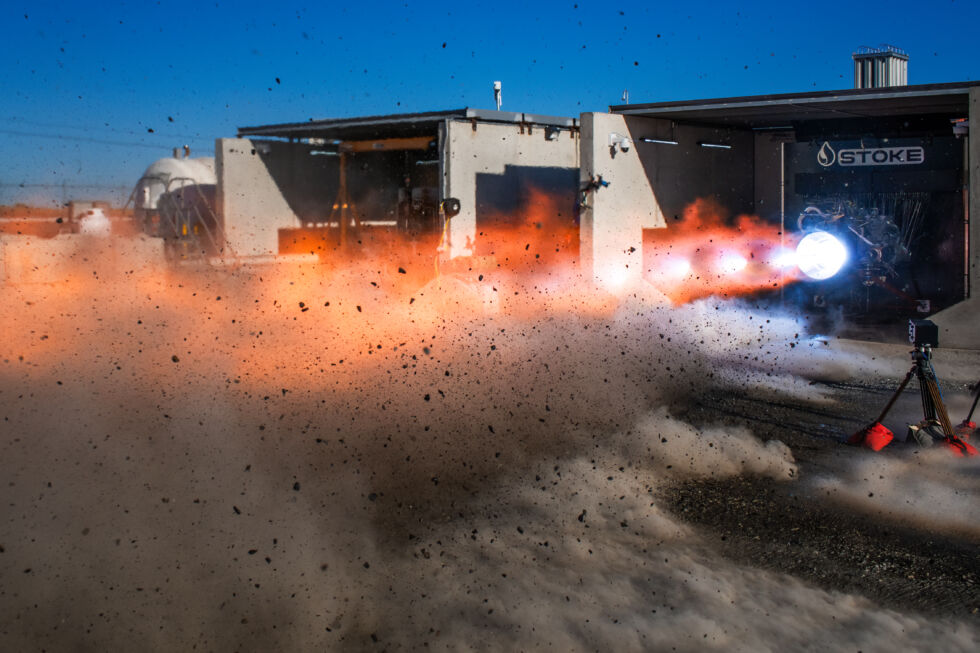Stoke Space goes for broke to solve the only launch problem that “moves the needle”
LAUNCH COMPLEX 14, Cape Canaveral, Fla.—The platform atop the hulking steel tower offered a sweeping view of Florida’s rich, sandy coastline and brilliant blue waves beyond. Yet as captivating as the vista might be for an aspiring rocket magnate like Andy Lapsa, it also had to be a little intimidating.
To his right, at Launch Complex 13 next door, a recently returned Falcon 9 booster stood on a landing pad. SpaceX has landed more than 500 large orbital rockets. And next to SpaceX sprawled the launch site operated by Blue Origin. Its massive New Glenn rocket is also reusable, and founder Jeff Bezos has invested tens of billions of dollars into the venture.
Looking to the left, Lapsa saw a graveyard of sorts for commercial startups. Launch Complex 15 was leased to a promising startup, ABL Space, two years ago. After two failed launches, ABL Space pivoted away from commercial launch. Just beyond lies Launch Complex 16, where Relativity Space aims to launch from. The company has already burned through $1.7 billion in its efforts to reach orbit. Had billionaire Eric Schmidt not stepped in earlier this year, Relativity would have gone bankrupt.
Andy Lapsa may be a brainy rocket scientist, but he is not a billionaire. Far from it.
“When you start a company like this, you have no idea how far you’re going to be able to make it, you know?” he admitted.
Lapsa and another aerospace engineer, Tom Feldman, founded Stoke Space a little more than five years ago. Both had worked the better part of a decade at Blue Origin and decided they wanted to make their mark on the industry. It was not an easy choice to start a rocket company at a time when there were dozens of other entrants in the field.
Andy Lapsa speaks at the Space Economy Summit in November 2025. Credit: The Economist Group
“It was a huge question in my head: Does the world really need a 151st rocket company?” he said. “And in order for me to say yes to that question, I had to very systematically go through all the other players, thinking about the economics of launch, about the business plan, about the evolution of these companies over time. It was very non-intuitive to me to start another launch company.”
So why did he do it?
I traveled to Florida in November to answer this question and to see if the world’s 151st rocket company had any chance of success.
Launch Complex 14
It takes a long time to build a launch site. Probably longer than you might think.
Lapsa and Feldman spent much of 2020 working on the basic design of a rocket that would eventually be named Nova and deciding whether they could build a business around it. In December of that year, they closed their seed round of funding, raising $9.1 million. After this, finding somewhere to launch from became a priority.
They zeroed in on Cape Canaveral because it’s where the majority of US launch companies and customers are, as well as the talent to assemble and launch rockets. They learned in 2021 that the US Space Force was planning to lease an old pad, Space Launch Complex 14, to a commercial company. This was not just a good location to launch from; it was truly a historic location—John Glenn launched into orbit from here in 1962 aboard the Friendship 7 spacecraft. It was retired in 1967 and designated a National Historic Landmark.
But in recent years, the Space Force has sought to support the flourishing US commercial space industry, and it has offered Launch Complex 14. After the competition opened in 2021, Stoke Space won the lease a year later. Then began the long and arduous process of conducting an Environmental Assessment. It took nearly two years, and it was not until October 20, 2024, that Stoke was allowed to break ground.
None of the structures on the site were usable, and aside from the historic blockhouse dating to the Mercury program, everything else had to be demolished and cleared before work could begin.
As we walked the large ring encompassing the site, Lapsa explained that all of the tanks and major hardware needed to support a Nova launch were now on site. There is a large launch tower, as well as a launch mount upon which the rocket will be stood up. The company has mostly turned toward integrating all of the ground infrastructure and wiring up the site. A nearby building to assemble rockets and process payloads is well underway.
Lapsa seemed mostly relieved. “A year ago, this was my biggest concern,” he said.
He need not have worried. A few months before the company completed its environmental permitting, a tall, lanky, thickly bearded engineer named Jonathan Lund hired on. A Stanford graduate who got his start with the US Army Corps of Engineers, Lund worked at SpaceX during the second half of the 2010s, helping to lead the reconstruction of one launch pad, the crew tower project at Launch Complex 39A, and a pad at Vandenberg Space Force Base. He also worked on multiple landing sites for the Falcon 9 rocket. Lund arrived to lead the development of Stoke’s site.
This is Lund’s fifth launch pad. Each one presents different challenges. In Florida, for example, the water table lies only a few feet below the ground. But for most rockets, including Nova, a large trench must be dug to allow flames from the rocket engines to be carried away from the vehicle at ignition and liftoff. As we stood in this massive flame diverter, there were a few indications of water seeping in.
Still, the company recently completed a major milestone by testing the water suppression system, which dampens the energy of a rocket at liftoff to protect the launch pad. Essentially, the plume from the rocket’s engines flows downward where it meets a sheet of water, turning it into steam. This creates an insulating barrier of sorts.
Water suppression test at LC-14 complete. ✅ Flowed the diverter and rain birds in a “launch like” scenario. pic.twitter.com/rs1lEloPul
— Stoke Space (@stoke_space) October 21, 2025
The water comes from large pipes running down the flame diverter, each of which has hundreds of holes not unlike a garden sprinkler hose. Lund said the pipes and the frame they rest on were built near where we stood.
“We fabricated these pieces on site, at the north end of the flame trench,” Lund explained. “Then we built this frame in Cocoa Beach and shipped it in four different sections and assembled it on site. Then we set the frame on the ramp, put together this surface (with the pipes), and then Egyptian-style we slide it down the ramp right into position. We used some old-school methods, but simple sometimes works best. Nothing fancy.”
At this point, Lapsa interrupted. “I was pretty nervous,” he said. “The way you’re describing this sounded good on a PowerPoint. But I wasn’t sure it actually would work.”
But it did.
Waiting on Nova
So if the pad is rounding into shape, how’s that rocket coming?
It sounds like Stoke Space is doing the right things. Earlier this year, the company shipped a full-scale version of its second stage to its test site at Moses Lake in central Washington. There, it underwent qualification testing, during which the vehicle is loaded with cryogenic fuels on multiple occasions, pressurized, and put through other exercises. Lapsa said that testing went well.
The company also built a stubby version of its first stage. The tanks and domes had full-size diameters, but the stage was not its full height. That vehicle also underwent qualification testing and passed.
The company has begun building flight hardware for the first Nova rocket. The vehicle’s software is maturing. Work is well underway on the development of an automated flight termination system. “Having a team that’s been through this cycle many times, it’s something we started putting attention on very early,” Lapsa said. “It’s on a good path as well.”
And yet the final, frenetic months leading to a debut launch are crunch time for any rocket company: first assembly of the full vehicle, first time test-firing it all. Things will inevitably go wrong. The question is how bad will the problems be?
For as long as I’ve known Lapsa, he has been cagey about launch dates for Stoke. This is smart because in reality, no one knows. And seasoned industry people (and journalists) know that projected launch dates for new rockets are squishy. The most precise thing Lapsa will say is that Stoke is targeting “next year” for Nova’s debut.
The company has a customer for the first flight. If all goes well, its first mission will sail to the asteroid belt. Asteroid mining startup AstroForge has signed on for Nova 1.
Stoke Space isn’t shooting for the Moon. It’s shooting for something 1 million times farther.
Too good to believe it’s true?
Stoke Space is far from the first company to start with grand ambitions. And when rocket startups think too big, it can be their undoing.
A little more than a decade ago, Firefly Space Systems in Texas based the design of its Alpha rocket on an aerospike engine, a technology that had never been flown to space before. Although this was theoretically a more efficient engine design, it also brought more technical risk and proved a bridge too far. By 2017, the company was bankrupt. When Ukrainian investor Max Polyakov rescued Firefly later that year, he demanded that Alpha have a more conventional rocket engine design.
Around the same time that Firefly struggled with its aerospike engine, another launch company, Relativity Space, announced its intent to 3D-print the entirety of its rockets. The company finally launched its Terran 1 rocket after eight years. But it struggled with additively manufacturing rockets. Relativity was on the brink of bankruptcy before a former Google executive, Eric Schmidt, stepped in to rescue the company financially. Relativity is now focused on a traditionally manufactured rocket, the Terran R.
Stoke Space’s Hopper 2 takes to the skies in September 2023 in Moses Lake, Washington. Credit: Stoke Space
So what to make of Stoke Space, which has an utterly novel design for its second stage? The stage is powered by a ring of 24 thrusters, an engine collectively named Andromeda. Stoke has also eschewed a tile-based heat shield to protect the vehicle during atmospheric reentry in favor of a regeneratively cooled design.
In this, there are echoes of Firefly, Relativity, and other companies with grand plans that had to be abandoned in favor of simpler designs to avoid financial ruin. After all, it’s hard enough to reach orbit with a conventional rocket.
But the company has already done a lot of testing of this design. Its first iteration of Andromeda even completed a hop test back in 2023.
“Andromeda is wildly new,” Lapsa said. “But the question of can it work, in my opinion, is a resounding yes.”
The engineering team had all manner of questions when designing Andromeda several years ago. How will all of those thrusters and their plumbing interact with one another? Will there be feedback? Is the heat shield idea practical?
“Those are the kind of unknowns that we knew we were walking into from an engineering perspective,” Lapsa said. “We knew there should be an answer in there, but we didn’t know exactly what it would be. It’s very hard to model all that stuff in the transient. So you just had to get after it, and do it, and we were able to do that. So can it work? Absolutely yes. Will it work out of the box? That’s a different question.”
First stage, too
Stoke’s ambitions did not stop with the upper stage. Early on, Lapsa, Feldman, and the small engineering team also decided to develop a full-flow staged combustion engine. This, Lapsa acknowledges, was a “risky” decision for the company. But it was a necessary one, he believes.
Full-flow staged combustion engines had been tested before this decade but were never flown. From an engineering standpoint, they are significantly more complex than a traditional staged combustion engine in that the oxidizer and propellant—which began as cryogenic liquids—arrive in the combustion chamber in a fully gaseous state. This interaction between two gases is more efficient and produces less wear and tear on turbines within the engine.
“You want to get the highest efficiency you can without driving the turbine temperature to a place where you have a short lifetime,” Lapsa said. “Full-flow is the right answer for that. If you do anything else, it’s a distraction.”
Stoke Space successfully tests its advanced full-flow staged combustion rocket engine, designed to power the Nova launch vehicle’s first stage. Credit: Stoke Space
It was also massively unproven. When Stoke Space was founded in 2020, no full-flow staged combustion engine had ever gotten close to space. SpaceX was developing the Raptor engine using the technology, but it would not make its first “spaceflight” until the spring of 2023 on the Super Heavy rocket that powers Starship. Multiple Raptors failed shortly after ignition.
But for a company choosing full reusability of its rocket, as SpaceX sought to do with Starship, there ultimately is no choice.
“Anything you build for full and rapid reuse needs to find margin somewhere in the system,” Lapsa said. “And really that’s fuel efficiency. It makes fuel efficiency a very strong, very important driver.”
In June 2024, Stoke Space announced it had just completed a successful hot fire test of its full-flow, staged combustion engine for Nova’s first stage. The propulsion team had, Lapsa said at the time, “worked tirelessly” to reach that point.
Not just another launch company?
Stoke Space got to the party late. After SpaceX’s success with the first Falcon 9 in 2010, a wave of new entrants entered the field over the next decade. They were drawing down billions in venture capital funding, and some were starting to go public at huge valuations as special purpose acquisition companies. But by 2020, the market seemed saturated. The gold rush for new launch companies was nearing the cops-arrive-to-bust-up-the-festivities stage.
Every new company seemed to have its own spin on how to conquer low-Earth orbit.
“There were a lot of other business plans being proposed and tried,” Lapsa said. “There were low-cost, mass-produced disposable rockets. There were rockets under the wings of aircraft. There were rocket engine companies that were going to sell to 150 launch companies. All of those ideas raised big money and deserve to be considered. The question is, which one is the winner in the end?”
And that’s the question he was trying to answer in his own mind. He was in his 30s. He had a family. And he was looking to commit his best years, professionally, to solving a major launch problem.
“What’s the thing that fundamentally moves the needle on what’s out there already today?” he said. “The only thing, in my opinion, is rapid reuse. And once you get it, the economics are so powerful that nothing else matters. That’s the thing I couldn’t get out of my head. That’s the only problem I wanted to work on, and so we started a company in order to work on it.”
Stoke was one of many launch companies five years ago. But in the years since, the field has narrowed considerably. Some promising companies, such as Virgin Orbit and ABL Space, launched a few times and folded. Others never made it to the launch pad. Today, by my count, there are fewer than 10 serious commercial launch companies in the United States, Stoke among them. The capital markets seem convinced. In October, Stoke announced a massive $510 million Series D funding round. That was a lot of money in a challenging time to raise launch firm funding.
So Stoke has the money it needs. It has a team of sharp engineers and capable technicians. It has a launch pad and qualified hardware. That’s all good because this is the point in the journey for a launch startup where things start to get very, very difficult.
Eric Berger is the senior space editor at Ars Technica, covering everything from astronomy to private space to NASA policy, and author of two books: Liftoff, about the rise of SpaceX; and Reentry, on the development of the Falcon 9 rocket and Dragon. A certified meteorologist, Eric lives in Houston.
Stoke Space goes for broke to solve the only launch problem that “moves the needle” Read More »
